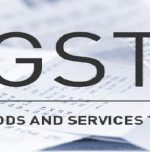Things to know about E-way bill

From tomorrow onwards, e-way bill is mandatory for the inter-state movement of goods.
Here are some important things to know about e-way bill:
- E-way bill is an electronic document.
- It is generated on the GSTN portal for the transfer of goods.
- Generating e-way bill is necessary if the consignment value exceeds ₹50,000.
- Earlier, only registered persons could issue e-way bills and unregistered people could not issue the bills.
- But, now as per the decision of GST Council, all registered and unregistered persons should have to issue e-way bills as per the prescribed consignment value.
- That means both registered and unregistered people can generate e-way bills.
- Generation of e-way bill can be done online or through SMS and even can be cancelled the same way.
- A unique e-way bill number is allocated for the transporter, supplier and the recipient with the generation of e-way bills.
- E-way bill should be generated for sales, sales returns and purchases from unregistered persons.
- Form EWB-01 is to be issued, and part A is to be filled in it to generate e-way bills.
- The main details to be filled in the form include: GSTIN of the recipient, value of goods, place of delivery, invoice number and date, HSN code and reason for transportation.
- Part B of the form is to be filled if the supplier transports the goods himself. It includes transportation document number and vehicle number in which goods are transported. However, filling in this part is not needed if the transportation distance is less than fifty kilometers for intrastate sales or purchases.
- If the goods are sent up to a 100 km distance, the validity of the e-way bill is one day from the date and time of its generation.
- If the distance is more than 100 km, the validity is an extra day for each 100 km traveled.
Image Credit: Openclipart / CC0 1.0
Image Reference: https://publicdomainvectors.org/en/free-clipart/Electric-bill/39745.html









Leave a Reply